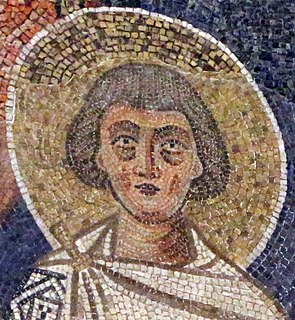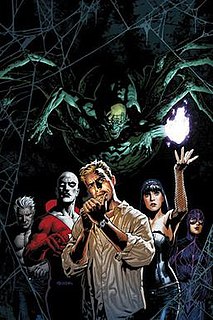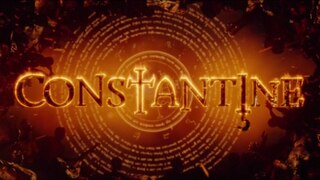Constantine IV was Eastern Roman Emperor from 668 to 685.
Constantine IV may also refer to:
Constantine IV was Eastern Roman Emperor from 668 to 685.
Constantine IV may also refer to:
Constantine most often refers to:

Constantine XI Dragases Palaiologos or DragašPalaeologus was the last Byzantine emperor, reigning from 1449 until his death in battle at the Fall of Constantinople in 1453. Constantine's death marked the end of the Byzantine Empire, which traced its origin to Constantine the Great's foundation of Constantinople as the Roman Empire's new capital in 330. Given that the Byzantine Empire was the Roman Empire's medieval continuation, with its citizens continuing to refer to themselves as Romans, Constantine XI's death and Constantinople's fall also marked the definitive end of the Roman Empire, founded by Augustus almost 1,500 years earlier.
Leo IV the Khazar was Byzantine emperor from 775 to 780 AD. He was born to Emperor Constantine V and Empress Tzitzak in 750. He was elevated to caesar the next year, in 751, and married to Irene of Athens in 768. When Constantine V died in September 775, while campaigning against the Bulgarians, Leo IV became senior emperor on 14 September 775. In 778 Leo raided Abbasid Syria, decisively defeating the Abbasid army outside of Germanicia. Leo died on 8 September 780, of tuberculosis. He was succeeded by his underage son Constantine VI, with Irene serving as regent.

Irene of Athens, surname Sarantapechaina (Σαρανταπήχαινα), was Byzantine empress consort to Emperor Leo IV from 775 to 780, regent during the childhood of their son Constantine VI from 780 until 790, co-ruler from 792 until 797, and finally empress regnant and sole ruler of the Eastern Roman Empire from 797 to 802. A member of the politically prominent Sarantapechos family, she was selected as Leo IV's bride for unknown reasons in 768. Even though her husband was an iconoclast, she harbored iconophile sympathies. During her rule as regent, she called the Second Council of Nicaea in 787, which condemned iconoclasm as heretical and brought an end to the first iconoclast period (730–787).

Constantine IV, called the Younger and sometimes incorrectly Pogonatos out of confusion with his father, was Byzantine Emperor from 668 to 685. His reign saw the first serious check to nearly 50 years of uninterrupted Islamic expansion, while his calling of the Sixth Ecumenical Council saw the end of the monothelitism controversy in the Byzantine Empire; for this, he is venerated as a saint in the Eastern Orthodox Church, with his feast day on September 3. He successfully defended Constantinople from the Arabs.

Constantine VI was Byzantine emperor from 780 to 797. The only child of Emperor Leo IV, Constantine was named co-emperor with him at the age of five in 776 and succeeded him as sole Emperor in 780, aged nine. His mother Irene exercised control over him as regent until 790, assisted by her chief minister Staurakios. The regency ended when Constantine reached maturity, but Irene sought to remain an active participant in the government. After a brief interval of sole rule Constantine named his mother empress in 792, making her his official colleague.
Anastasia is a feminine given name of Greek origin, derived from the Greek word anástasis (ἀνάστασις), meaning "resurrection". It is a popular name in Eastern Europe, particularly in Russia, where it was the most used name for decades until 2008.

Eudokia Makrembolitissa was a Byzantine empress by her successive marriages to Constantine X Doukas and Romanos IV Diogenes. She acted as regent of her minor son, Michael VII in 1067, and resigned her regency by marriage to Romanos IV Diogenes. When he was deposed in 1071 she resumed the regency for her sons, but was soon forced to resign again.
Theodora is a given name of Greek origin, meaning "God's gift".

The Kingdom of Imereti was a Georgian monarchy established in 1455 by a member of the house of Bagrationi when the Kingdom of Georgia was dissolved into rival kingdoms. Before that time, Imereti was considered a separate kingdom within the Kingdom of Georgia, to which a cadet branch of the Bagrationi royal family held the crown. This started in 1260 after David VI revolted against Mongolian rule and fled to Abkhazia. This was the result of the Mongolian conquest of Georgia during the 13th century which decentralized and fragmented Georgia, forcing the relocation of governmental centres to the provinces.
King Constantine may refer to:
Constantine of Armenia may refer to:
Heraclius was a Byzantine emperor.

Matthew Darren Evans, known professionally as Matt Ryan, is a Welsh actor. He is known for portraying Edward Kenway in the Ubisoft video game Assassin's Creed IV: Black Flag, and John Constantine in NBC's Constantine and The CW's Arrowverse, as well as voicing a version of the character in the 2017 film Justice League Dark, the 2020 film Justice League Dark: Apokolips War and its CW Seed spin-off web series Constantine: City of Demons.

Heraclius was Byzantine co-emperor from 659 to 681. He was the son of Emperor Constans II and Fausta, who was elevated in 659, before his father departed for Italy. After the death of Constans, Heraclius' brother Constantine IV ascended the throne as senior emperor. Constantine attempted to have both Heraclius and Tiberius removed as co-emperors. However, this sparked a popular revolt in 681. Constantine ended the revolt by promising to accede to the demands of the rebels, sending them home, but bringing their leaders into Constantinople. Once there, Constantine had them executed, then imprisoned Tiberius and Heraclius and had their noses slit, after which point they disappear from history.

Tiberius was Byzantine co-emperor from 659 to 681. He was the son of Constans II and Fausta, who was elevated in 659, before his father departed for Italy. After the death of Constans, Tiberius' brother Constantine IV, ascended the throne as senior emperor. Constantine attempted to have both Tiberius and Heraclius removed as co-emperors, which sparked a popular revolt, in 681. Constantine ended the revolt by promising to accede to the demands of the rebels, sending them home, but bringing their leaders into Constantinople. Once there, Constantine had them executed, then imprisoned Tiberius and Heraclius and had them mutilated, after which point they disappear from history.

The Justice League Dark, or JLD, is a fictional superhero team appearing in American comic books published by DC Comics. First appearing in Justice League Dark #1, the Justice League Dark originally featured John Constantine, Madame Xanadu, Deadman, Shade: The Changing Man, and Zatanna, eventually being joined by prominent members such as Swamp Thing and Wonder Woman. The team consists of the more supernatural members of the DC Universe, handling situations deemed outside the scope of the traditional Justice League.

Constantine is an American occult detective drama television series developed by Daniel Cerone and David S. Goyer for NBC. Based on the DC Comics character of the same name, it stars Matt Ryan as the eponymous John Constantine, an English exorcist and occult detective who hunts supernatural entities. The series premiered on October 24, 2014, and aired for one season, concluding on February 13, 2015.
Constantine Diogenes was a prominent early 11th-century Byzantine general.
Patriarch Constantine of Constantinople may refer to: